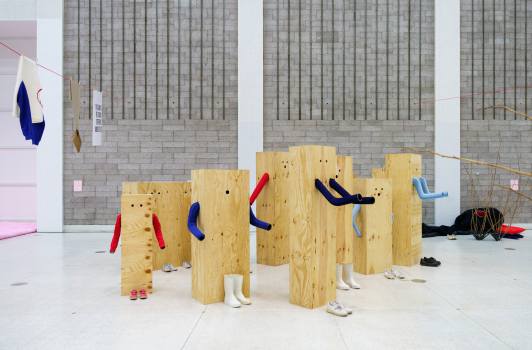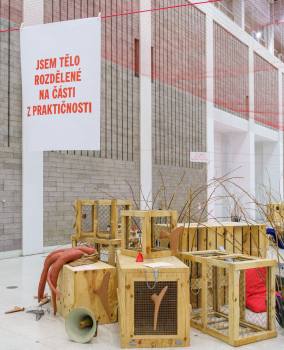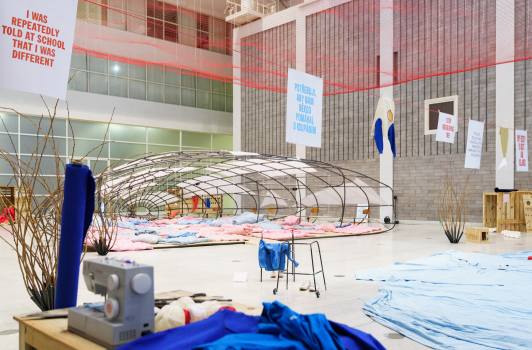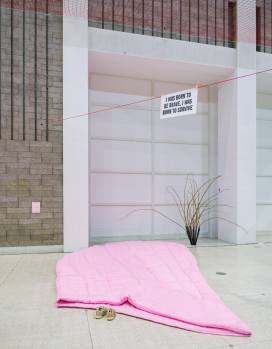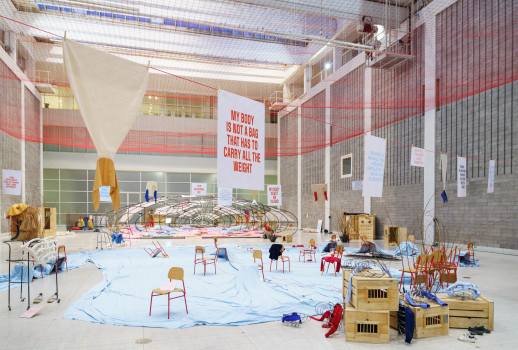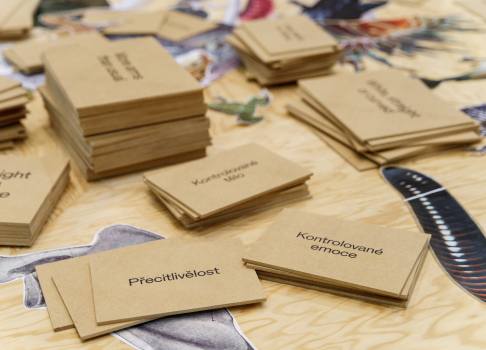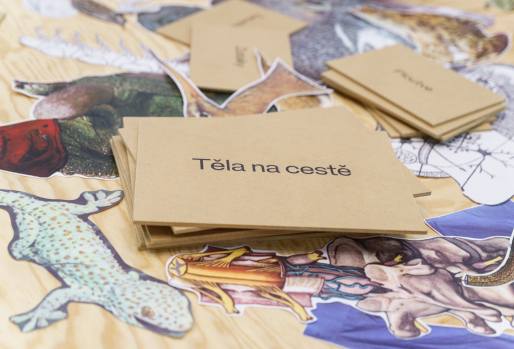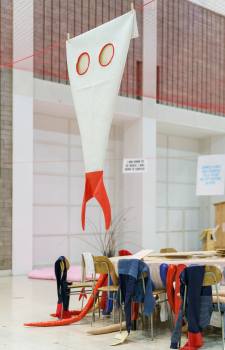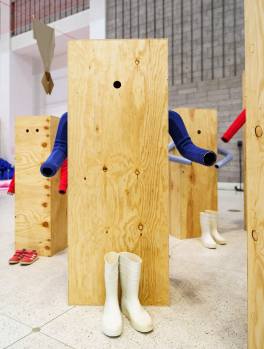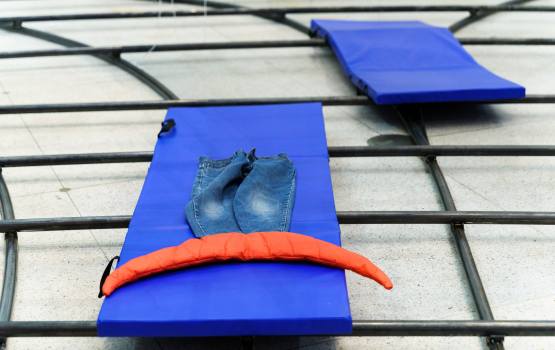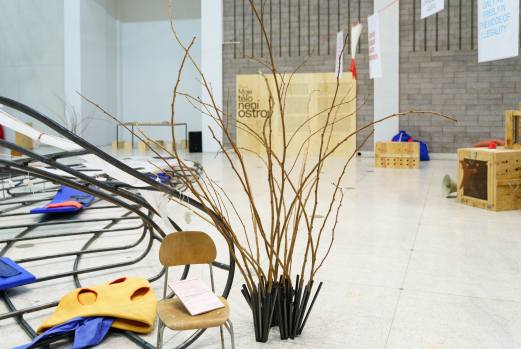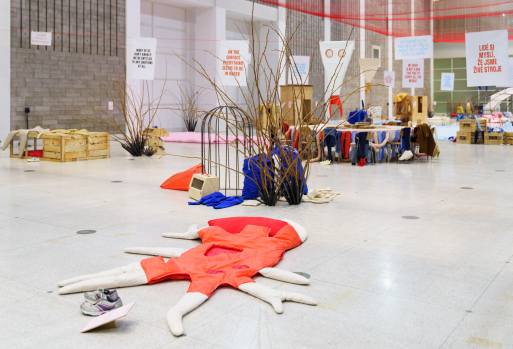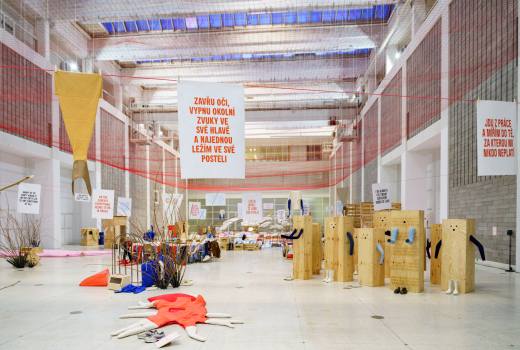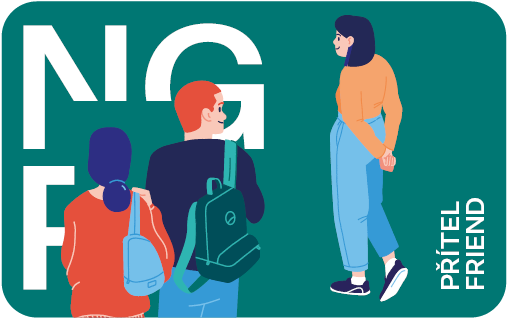In her work, Eva Koťátková combines objects, collages, costumes, and texts into vast, playful, poetic, and often performative installations, to suggest how deeply our personal lives are swayed by our social environment with its codes and norms. This sway is materialized by complex machineries that constrain the body, but also hold possibilities for its transformation. Taking its cue from theatrical devices, a critique of psychiatric ethos, and certain forms of experimental education, Koťátková’s work develops in tight connection with narratives – a narration in fragments, scattered across the exhibition, that make up the image of the world.
My Body Is Not an Island takes the shape of a gigantic body, part-fish, part-human; each part tells a myriad of stories whose entrancing litany echoes throughout the exhibition space. With its inscrutable, troubling identity, and the way it unfolds like an immersive landscape, it is accessible to any visitor willing to lend an ear to its many stories. Every Saturday afternoon during the course of the exhibition, the installation will be inhabited and activated by performers, who will share with the public the different stories it contains: that of a child bullied at school, of a shrimp being boiled alive, or of a bush torn away from its native surroundings to be replanted in the suburbs. As a whole, the spirit of the installation seems to rest upon the cry for a life with more empathy and less normative pressure uttered by one of its protagonists: “I dream of a body endowed with many skins.”
The fragmented body holds within its belly an assortment of boxes and crates from which beast-like and human-like creatures seem poised to escape. Bodies in flight, transient and transitory; bodies that refuse to be named; bodies that cannot be ascribed any label; bodies that won’t keep quiet; bodies that express freely what they feel and what they dream of. The recurring motif of the crate is a symbol both of mobility and movability – whether voluntary or forced – from one place or state to another, and of normativity and codification, typifying our urging desire to put everything into neat boxes, to contain, as it were, our fear of ambiguity, rather than to think outside the box. The installation proposes a platform opened with empathy to those whose voices – human, vegetal, animal – are reduced to silence, whose condition is challenged, whose life has been uprooted, and who undergo forced labelling and stigmatisation.
Performances:
Every Saturday afternoon* between 2pm and 5pm during the course of the exhibition, the installation will be activated by performers, who will share with the public the different stories it contains: that of a child bullied at school, of a shrimp being boiled alive, or of a bush torn away from its native surroundings to be replanted in the suburbs.
*On 4/2–5/2 2023, as part of the celebration of the 227th anniversary of the founding of the NGP, performances will take place on Saturday and Sunday.
Curators:
Sandra Patron, exhibition curator and director of the CAPC Museum of Contemporary Art, Bordeaux, France
Rado Ištok, curator of the Collection of Modern and Contemporary Art
My Body Is Not an Island takes the shape of a gigantic body, part-fish, part-human; each part tells a myriad of stories whose entrancing litany echoes throughout the exhibition space. With its inscrutable, troubling identity, and the way it unfolds like an immersive landscape, it is accessible to any visitor willing to lend an ear to its many stories. Every Saturday afternoon during the course of the exhibition, the installation will be inhabited and activated by performers, who will share with the public the different stories it contains: that of a child bullied at school, of a shrimp being boiled alive, or of a bush torn away from its native surroundings to be replanted in the suburbs. As a whole, the spirit of the installation seems to rest upon the cry for a life with more empathy and less normative pressure uttered by one of its protagonists: “I dream of a body endowed with many skins.”
The fragmented body holds within its belly an assortment of boxes and crates from which beast-like and human-like creatures seem poised to escape. Bodies in flight, transient and transitory; bodies that refuse to be named; bodies that cannot be ascribed any label; bodies that won’t keep quiet; bodies that express freely what they feel and what they dream of. The recurring motif of the crate is a symbol both of mobility and movability – whether voluntary or forced – from one place or state to another, and of normativity and codification, typifying our urging desire to put everything into neat boxes, to contain, as it were, our fear of ambiguity, rather than to think outside the box. The installation proposes a platform opened with empathy to those whose voices – human, vegetal, animal – are reduced to silence, whose condition is challenged, whose life has been uprooted, and who undergo forced labelling and stigmatisation.
Performances:
Every Saturday afternoon* between 2pm and 5pm during the course of the exhibition, the installation will be activated by performers, who will share with the public the different stories it contains: that of a child bullied at school, of a shrimp being boiled alive, or of a bush torn away from its native surroundings to be replanted in the suburbs.
*On 4/2–5/2 2023, as part of the celebration of the 227th anniversary of the founding of the NGP, performances will take place on Saturday and Sunday.
Curators:
Sandra Patron, exhibition curator and director of the CAPC Museum of Contemporary Art, Bordeaux, France
Rado Ištok, curator of the Collection of Modern and Contemporary Art
Trade Fair Palace – Great Hall
Have a closer look at the crate content – you can download it here.
1—1 / 18




